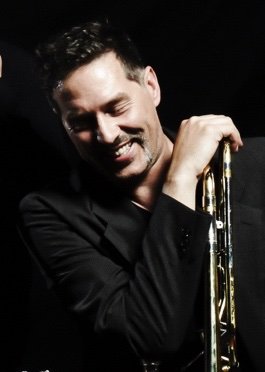THIS IS A TROMBONE
DON IMMEL, trombone
STEFAN CASSOMENOS, piano
ABOUT THE PROJECT
In 2018, I visited the conservatory libraries of Brussels, Antwerp, Ghent and Liége hoping to uncover a few pieces for my instrument. I returned home to Melbourne with over 4000 pictures of manuscripts and out-of-print scores featuring the trombone. I organized the pieces by genre (with piano, in chamber settings, etc.) and began engaging friends and colleagues to read through the repertoire.
One of several volumes, this album features seven works chosen from a sizeable list of largely forgotten literature originally written for trombone and piano. To my knowledge - and this is surprising to me - This is a Trombone contains premiere commercial trombone recordings of each work. It is surprising because this is a collection of beautiful, powerful trombone music written by composers who were well known in their day. For example, trombonists have long complained of having little music from the romantic era, and yet here we have a beautifully constructed, three movement sonata in the style of Beethoven, by the Belgian master Peter Benoit. The colorful Concertino by the Brussels born, Prix de Rome winning composer François Rasse, a thrilling and bombastic Impromptu by Raymond Baervoets, and, in contrast, a tuneful, blues-inspired, virtuosic piece of the same name by Marcel Poot. All of these pieces deserve to be studied, shared, and performed.
This project is part of my ongoing research agenda to rediscover, commission, compose, perform, and record music that showcases the trombone, with the goal of expanding quality repertoire to engage modern day audiences. I wish to thank my friends and colleagues within the Melbourne Conservatory of Music, especially Joel Brennan, Ken Murray, Carla Blackwood, Richard Kurth and the Lyrebird Brass gang. Thanks to the wonderful library staff of the Antwerp, Liége, Brussels, and Ghent Conservatories for your onsite assistance and email follow ups. My appreciation to the University of Melbourne for supporting study leave which eventually led to this project. Special thanks and love to my wife Erin, my children William and Josephine, and to my parents and sister for their kindness, patience and support. – Don Immel
The Belgian artist Renè Magritte’s influential 1929 painting was known as Ceci n’est pas une pipe (This is not a pipe). The artist actually referred to it as l'air et la chanson (The Wind and The Song). Magritte often combined words with images to challenge viewers’ preconditioned perceptions of reality. For example, he would argue that this cover is not a trombone, but rather, it is merely an image representing a trombone. Although leading artists of this period contemplated whether words or images were better able to represent reality, we musicians inherently recognize that musical sound is often more powerful than either. This is a trombone. – Don Immel
Musicians around the world are familiar with the impressive canon of literature written to support the Paris Conservatoire concours curriculum. In the mid 19th century, Belgian conservatories developed similar curricula, and engaged regional composers to write new music for their students and staff. Far less is known about this repertoire, and much of it remains unpublished and unrecorded.
Marcel Poot
1. Impromptu pour Trombone et Piano
Peter Benoit: Sonata voor bazuin et klavier
2. Un poco Larghetto, quasi Andantino
3. Scharzo
4. Finale en style fugue
Raymond Baervoets
5. Impromptu pour Trombone et Piano
Pierre Durand
6. Parcours pour Trombone et Piano
Joseph Edouard Barat
7. Pièce en mi bémol pour Trombone et Piano
Fernand Rogister
8. Pièce Concertante pour Trombone et Piano
Francois Rasse
9. Concertino: Morceau de Concours pour Trombone et Piano
ABOUT THE MUSICIANS
ABOUT THE COVER
Photograph by Tim Bell
TRACK INFORMATION
COPYRIGHT INFORMATION
Don Immel is committed to performing, commissioning, composing and recording music that showcases the trombone, with a focus on engaging modern day audiences. 2022 album releases include Apex Predators featuring quintet music by Australians or about Australia, and two albums of Belgian music: This is a Trombone: music for trombone and piano, and Tonnerre de Brass: music for brass trio.
Immel’s diverse catalogue of premiere recordings includes Punch: the Brass Music of Katy Abbott and Return Journey: Three Sonatas by Stuart Greenbaum (both on ABC Classics) two albums of his original jazz-based compositions Long Way Home and Together Alone, and several projects featuring works commissioned by his cutting-edge chamber ensemble Three. These include Midnight Songs (Tall Poppies), Despite Our Silent Elders and Voodoo Sonnets (Lyrebird Productions).
Don Immel serves as Associate Professor of Trombone at the Melbourne Conservatorium of Music, a position he’s held since 2012. Previous posts include Solo/Principal Trombone with the South Danish Philharmonic, and Associate Professor of Trombone and Jazz Studies at the University of Washington (Seattle, USA). Don Immel is an Edwards Instrument Company artist.
Melbourne pianist, composer and artistic director Stefan Cassomenos is one of Australia’s most vibrant and versatile musicians. He has been performing internationally since the age of 10, and is now established as one of Australia’s leading pianists. As the recipient of multiple prizes including the Second Grand Prize in the prestigious International Telekom Beethoven Competition Bonn 2013, Cassomenos has performed throughout Europe and Asia, and now performs regularly in Australia, Germany and the UK. He has performed concertos with several major Australian symphony orchestras, as well as orchestras overseas.
Cassomenos gave the world premiere of his own Piano Concerto No. 1 with the Adelaide Symphony Orchestra at the age of 16, and since then his compositions continue to be performed internationally. His new chamber opera Herodias was premiered in 2021 by Victorian Opera.
Cassomenos is active as an artistic director of various festivals, projects and collaborations. He is a founding member of chamber ensemble PLEXUS, which has commissioned and premiered over 110 new works since 2014.
Stefan Cassomenos is generously supported by Kawai Australia
ABOUT THE COMPOSERS & COMPOSITIONS
Brussels composer Marcel Poot (1901-1988) described himself early on as a hardworking, but untalented performer. Fortunately, his real talents were fostered at the Brussels Conservatory by the influential composer Paul Gilson. With his purpose found, Poot would eventually become one of the most important Belgian musicians of the mid 20th century. Winning the Rubens Prize in 1930 supported three years of study in Paris with Paul Dukas, during which time the Impromptu was composed. Poot became a lecturer at the Brussels Conservatory in 1939, and eventually became its Director from 1949-1966. Although his large output of works is largely unknown today, Poot was a popular composer across Europe throughout the mid 20th century.
Peter Benoit (1834 – 1901) was one of the most prolific and impactful Belgian composers of the 19th century, eventually becoming the first director of the Antwerp Conservatory. His early studies at the Brussels Conservatory were with its well-connected director François-Joseph Fétis, who eventually introduced Benoit to influential musicians in France and Germany. Benoit assigned the Sonata for Trombone and Piano an opus number of 23, suggesting it was written in February of 1863. This would have been during the final weeks of his four years living in Paris, where Europe’s most renowned trombone class was flourishing. The Sonata may have been used for the 1864 concours in Antwerp, but it was never used in this capacity in Paris despite it being a more advanced work than those on their list for decades before or after its composition. Composed in the style of Beethoven, the Sonata is exceptionally well-crafted, and fills a substantial gap in the known trombone repertoire.
Raymond Baervoets (1930 - 1989) earned top prizes for harmony, counterpoint, and fugue at the Brussels Conservatory where he studied with Jean Absil and Francis de Bourguignon among others. Composed in his early, traditional - and prize-winning - style, Impromtu was written in 1958 for Professor Jules De Haes of the Antwerp Conservatory. Baervoets eventually renounced all compositions before 1961, turning towards neo-classical and post serialism styles. His later period was influenced by studies with the Hungarian-Austrian avant-guard composer György Sándor, Ligeti, and Italian modernist composer Goffredo Petrassi.
French composer and music educator Pierre Durand (1935 – 1998) was born in Paris. Educated at the Paris Conservatory where he studied with Tony Aubin among others, Durand dedicated his career to teaching music theory and composing test pieces for education purposes. His long affiliation with the top music education institutions in Paris supported a large catalog of works, primarily solo piano pieces and chamber music. The through-composed Parcours, which means “route” or “path” was written at the request of Professor Gerard Pichaureau. It was the assigned piece for the Paris Conservatory trombone concours of 1975.
French composer and band leader Joseph Edouard Barat (1882-1964) studied with Paul Vidal, George Caussade, and Emile Pessard at the Paris Conservatory. He is best remembered for his solo works for wind and brass instruments written as test pieces for the annual Paris Conservatory concours. Included in his extensive output of solo literature are two works commissioned specifically for the trombone concours. The second of these compositions, Andante et Allegro, was the assigned test piece both in 1935 and 1940, and it continues to be programmed on student recitals to this day. This earlier commission Pièce en Mi Bémol was also used twice, in 1923 and 1929, and is the more difficult of the two pieces. With significant chromaticism through fast passages, and wider written ranges, this work requires significant technical virtuosity.
Fernand Rogister (1872 - 1954) was a career military bandmaster, serving with the Belgian 9th, 10th and 11th Line Regiments. Fernand and his three younger brothers Jean, Chrétien, and Hubert all trained at the Liège Conservatory, and all four became prominent musicians. Pièce Concertante is a simple work, written in a through-composed, Romantic style. It was originally intended to feature either trombone or alto saxophone as the solo instrument. In addition to the version with piano heard here, the composer also penned a full orchestra accompaniment. The piece was dedicated to Henri Moureau, Professor of Trombone and Tuba at the Liège Conservatory, and was first published in 1946.
François Rasse (1873-1955) had a successful career as musician, conductor, critic and composer. Rasse studied violin and composition at the Brussels Conservatory, winning the Belgian Prix de Rome for composition in 1899. He became renowned as a composer, adopting a late Franco-Belgian Romantic style reminiscent of Saint Saëns. In 1910 Rasse was hired by his alma mater, continuing to teach in Brussels until becoming Director for the Liége Conservatory in 1925. Written in 1921, the Concertino was dedicated to his Brussels colleague Henri Séha. Although this recording uses a modern slide trombone, it includes several virtuosic ossai (alternative) passages likely to have been written specifically for a six-valved trombone, an instrument that Séha taught to students in his class.
(All notes researched and written by Don Immel)
Recorded 20 - 23 December, 2019 in Melba Hall at the Melbourne Conservatorium of Music,
University of Melbourne, Australia.
Recorded and mastered by Haig Burnell. Edited by Don Immel and Haig Burnell.
Produced by Don Immel and Haig Burnell.
CTA 1008
© & ℗ 2022 Don Immel




